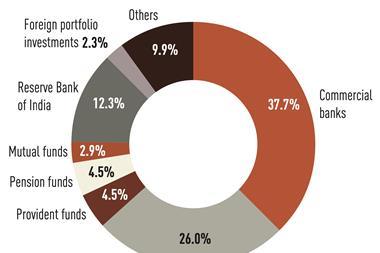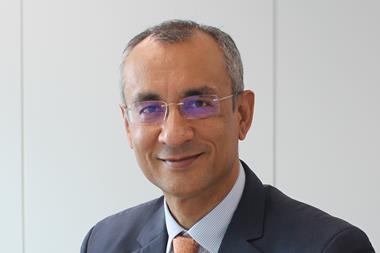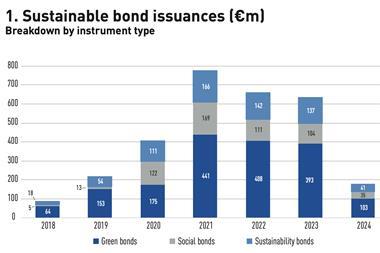Institutional investors are increasingly looking for new sources of return and ways of managing risk — why do you think they should invest in emerging market debt?Emerging market debt is a rapidly developing asset class. Historically, emerging countries have been overlooked by mainstream investors who consider them as crisis prone, highly indebted and politically unstable. Investing in them was a risky and highly volatile proposition.
In the last few years, however, emerging markets have become the talking point for many investors. Rapidly growing economies, with China overtaking Japan as the second-largest economy in the world, growing international reserves, increasing political stability, etc are some of the factors that cannot be overlooked anymore.
We have seen that most emerging countries came out of the 2008-2009 crisis in much better shape than the developed countries. Emerging countries are becoming a bigger factor in global growth. International Monetary Fund data shows in 2009 emerging and developing economies grew by 2.5% but advanced economies contracted by 3.2%. For 2010, the IMF forecasts 7.1% growth in emerging countries, but just 2.7% in the developed world.
In the current environment of sluggish growth and large fiscal imbalances in the developed countries, which in turn produced extremely loose monetary policy and low yields, investors are naturally looking for higher yielding investments. Emerging market debt is an asset class that provides substantial yield and solid macro-economic fundamentals, which make it a less risky investment than in the past.
Why do you think this asset mix is a good combination right now?
There are three main asset classes in emerging markets that I invest in: emerging FX, local currency debt and external debt. They have different correlation with the other mainstream asset classes such as equity, commodities or G3 bonds. Investing in all three of them provides me with diversification and gives me the ability to arbitrage between them in order to extract the most value.
Local currency debt is the newest asset class and is proving to be very popular with investors. Keeping in mind solid macroeconomic fundamentals in EM countries, interest rate differentials between G3 rates and EM rates are very attractive. There are still countries where investors can obtain a double-digit yield in bonds. Brazilian bonds, for example yield close to 12%.
Emerging FX is another enticing proposition. With solid GDP growth, most of the central banks in emerging markets are cautious about rising inflation. Some of them have already started raising interest rates. For EM FX, this leads to increased interest rate differentials, or carry, between G3 currencies and EM currencies, which makes it an attractive investment. It is also the most liquid asset class out of the three.
Also, external debt is interesting. Levels of sovereign external debt have been decreasing path over the past few years: improving fundamentals allowed countries to issue more local debt, thus taking out foreign exchange risk on their debt. More emerging market companies are issuing bonds. Spreads on external debt are still attractive, even though we have seen a substantial spread compression over the past few months. The JP Morgan Emerging Markets Bond Index Global spread to US Treasuries is around 140 basis points wider compared to the all-time low levels in 2007. However external debt performance is underpinned by the extremely strong US Treasuries market and yet again, very low yields available in G3.
In which sectors or countries do you see the best opportunities?
Currently in external debt we like high-yielding bonds. Sovereign debt from Argentina and Venezuela in Latin America, Ukraine, Belarus, Ivory Coast and Dubai in Europe, the Middle East and Africa, and Sri Lanka and Pakistan in Asia represent value.
In the corporate space we prefer to have a mix of high-yield and high-grade bonds. In the high-yield space we like Mexican homebuilders, with the focus on domestic housing market. Quasi-sovereign corporate bonds in the EMEA region, such as Russia, Ukraine and Dubai are cheap compared to similarly rated corporate bonds in the developed world. In Asia we like Indonesia mining industry bonds. In the high-grade universe, we like South Korean and Qatari corporates.
In local bonds, we like to be invested in countries such as Turkey, South Africa, Indonesia, Brazil, Mexico and Russia, where there is sufficient liquidity. Local rates in less-liquid markets in Africa and Eastern Europe are also attractive as investors are compensated for illiquidity with double-digit yields.
In FX, we like to have exposure in Asia to countries such as South Korea, India and the Philippines. The best opportunities in the EMEA region are in Russia, Ukraine and Turkey. In Latin America, the Mexican peso and Brazilian real represent the best value.
Describe the appeal of emerging market debts funds to an institutional investor, particularly a pension fund.
Emerging market debt allocations in pension funds industry are fairly low. Increasing those allocations would provide investors with a substantial yield pick up comparing to G3 bonds, and would increase diversification of the portfolio. At the end of the day, this in an investment in a maturing asset class with decent macroeconomic fundamentals.
Such investors are typically concerned with risk control. How does investing in an emerging market debt fund help them manage their investment risk?
First of all, it is asset diversification for their funds. Second, it is a diversification within specific funds that they invest in. For example at Amundi, we pay a lot of attention to geographical diversification and diversification by asset class. Third, it is a tracking error management that a pension fund can have, allocating funds to different money managers with different tracking-error constraints.












No comments yet